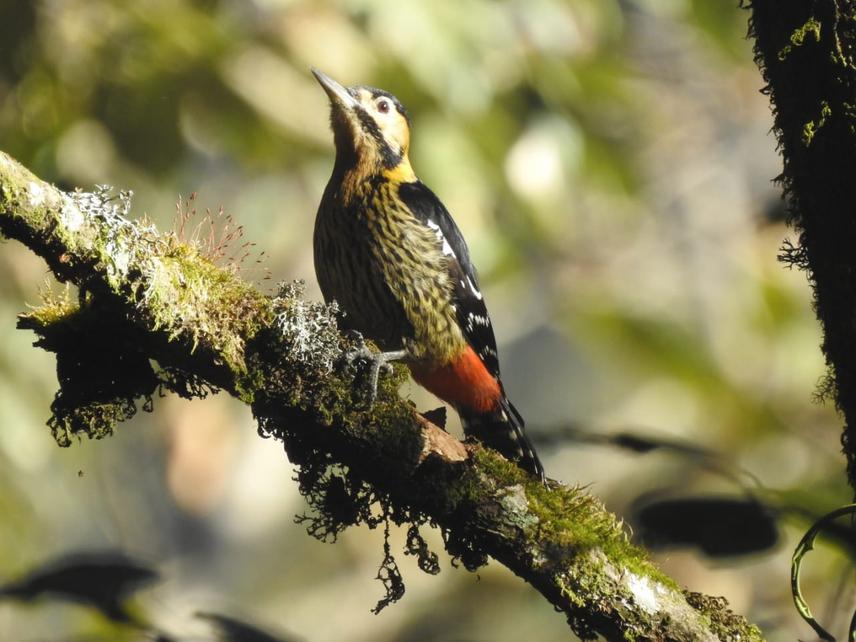Article featuring the project.
Aditya Pradhan
Other projects
14 Jun 2024
Promoting Bird Conservation Through Community Engagement in Darjeeling, Eastern Himalaya, India
Darjeeling Himalaya is known to harbour 69% of all woodpeckers and about 50% of all birds found in India, even though the region only contributes to <0.0001% of total area of India. This makes Darjeeling a hotspot of avian diversity, worthy of conservation attention. This integral part of the Eastern Himalaya is characterised by diverse forest management regimes, which even though are contiguous with one another, differ in terms of forest structure, forestry operations, and standing tree diversity, all of which have been found to affect woodpecker community assemblages. This provides an opportunity to work on understanding the community structure of woodpeckers, their interactions with other avian species, and their habitat characteristics, especially when there is insufficient information on all aspects related to this avian group in the Eastern Himalaya, driven by lack of resources, priority, and awareness about their ecological roles. Birds in the landscape are threatened by: i) habitat alteration, ii) local linear infrastructure development, iii) destruction of key habitats, iv) paucity of ecological information, and awareness among local communities.

Darjeeling Woodpecker (Dendrocopos darjellensis) in Darjeeling. © Mingma Tamang.
The project is proposed to be implemented in Darjeeling, Eastern Himalaya, India with objectives to i) generate information base on the community structure of woodpeckers and other birds in the differently managed forests, ii) organise awareness, outreach, and capacity-building events involving key stakeholders.
On completion, this project is expected to aid in providing a general understanding of avian diversity and their responses to forestry operations under different management regimes, while also contributing towards: (1) establishing a comprehensive information base on the community structure of woodpeckers and other birds in the differently-managed forests, (2) organising awareness, outreach, and capacity-building events involving key stakeholders regarding the local avian diversity, their ecological roles, services they provide, and threats that they face, and (3) identifying key woodpecker sites and linking bird-tourism and bird conservation as a means to incentivise local communities. Further, the scientific results of this study will provide information on: (1) the current status of differently managed forests in Darjeeling Himalaya as biodiversity repositories, (2) the environmental and vegetation variables that influence community structure and assemblage of woodpeckers, (3) the response of different woodpecker species to forestry operations, and (4) the relationship between woodpecker diversity, bird richness and forest health. Thus, this study will serve as a baseline for assessing the status of woodpeckers and associated avifauna in the non-protected human-dominated landscapes of Eastern Himalaya.
Header: Rufous woodpecker (Micropternus brachyurus) on a mango tree in Badamtam Forest @Aditya Pradhan.
Project Updates
11 Jun 2025
18 Feb 2025
Article featuring the project.
Exploring foraging niche dynamics of woodpeckers in the non-protected forests of eastern Himalaya
20 Aug 2025
Articles featuring the project.
High in the temperate oak and rhododendron forests of the Eastern Himalaya lives the Darjeeling Woodpecker (Dendrocopos darjellensis), the only bird named after Darjeeling, yet unknown to most locals. Found only in undisturbed forests above 1,800m, its presence signals healthy, diverse bird communities, making it a vital indicator species for conservation planning. Protecting it means safeguarding old oaks, deadwood, and the unique forest heritage of the region, and embracing a species that can be a proud symbol of Darjeeling’s natural identity.
The Bird of the Darjeeling Hills: Why the Darjeeling Woodpecker Deserves Our Attention